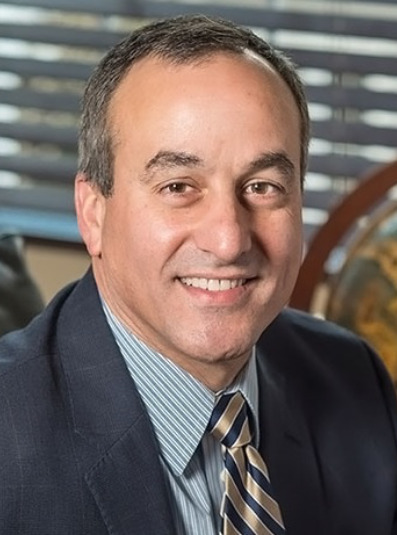Ever-changing rules for repaying student loans have resulted in some borrowers choosing plans with higher payments than they otherwise might have gotten; longer than needed repayment time-frames; and avoidable payment of potentially thousands of dollars in extra payments for not following special plans that, for example, let employees of government and other public agencies have part of their debt erased.
Borrowers’ years-long confusion about such issues as loan-forgiveness prompted the U.S. Department of Education, on Feb. 24, to start adjusting and potentially reducing payments based on a borrower’s family size and income. Further reductions kick in on July 1.
For future borrowers, experts suggest several ways to avoid confusion about changes in repayment rules by comparing college costs while choosing where to apply for admission, borrowing minimally and learning where to turn for reliable student loan repayment information and advice.
Payment plans can and do change
Borrowers should only apply for an amount they’re relatively certain they can afford to repay after graduating college, said Robert Falcon, CEO of College Funding Solutions, which strategizes with students on selecting and paying for college.
Salary.com or Glassdoor.com, among other sites, help borrowers estimate what they can comfortably pay based on what they earn, post-college, no matter which plans are offered in the future. Currently and increasingly, monthly payments have been lowered and, for those who qualify for loan forgiveness, the time-frames needed to do so have been shortened.
Colleges should be carefully compared

Courtesy of Robert Falcon
Robert Falcon, CEO, College Funding Solutions
“Do as much as you can to understand paying for college now to avoid more problems in the future.”
Robert Falcon, CEO,
College Funding Solutions
Often, students don’t know how to pick colleges with the best programs for their field of study and value. Reflexively, some students aim for the most well-regarded and high-priced, private or state colleges, even when they may not offer them the best bang for their buck or future job prospects.
“Let’s say you have an engineering student whose family is middle- or upper-middle class and doesn’t qualify for need-based aid,” Falcon said. “They can go to Carnegie Mellon and pretty much pay sticker price because the school doesn’t offer any merit aid. But if you go to a school like Case Western, which is right across the border in Cleveland, 37 percent of first-year students didn’t qualify for need-based aid but received merit aid.”
For example, the difference between Carnegie Mellon University and Case Western Reserve University could be $25,000 per year, Falcon said, depending on the scholarships or other merit-based aid a student gets. Over four years, that reduces what a family would have to pay out-of-pocket or borrow by $100,000.
Potential college costs based on a student’s academic and financial needs can be determined by using net price calculators online and by directly contacting college financial aid offices.
Consider paying future interest on loans while a student

Courtesy of Ken Ruggiero
Ken Ruggiero, CEO, Ascent Funding
“Don’t leave money on the table by not filling out the FAFSA.”
Ken Ruggiero, CEO,
Ascent Funding
While federal student loans have income-driven repayment options, private student loans don’t, said Ken Ruggiero, CEO of Ascent Funding, a private lender. So, paying private student loan interest while in college is helpful.
“If you have an opportunity to chip away at debt while you’re still in school and choose to defer your payments until after graduation, making a payment to cover the interest or $25 each month can go a long way in tackling the overall amount you owe,” Ruggiero said.
As another way to keep payments manageable, Ruggiero also said borrowers should know what it means to convert federal loans into private loans refinanced by a private lender. Private loans, unlike federal loans, do not allow for income-based payments that may be lower than higher market-driven rates or that may lead to part of that debt being forgiven after a certain number of years of repayment.
For instance, a borrower may have completed 10 out of 15 years towards an income-based repayment plan timeline. If that borrower converts to a private loan the repayment would be based on new loan terms. Also, no amount of debt will be forgiven at the end of the loan. It’s a normal payment plan similar to a car loan.
Additionally, since some borrowers may not be fully aware of, for example, how the pause on payments during the COVID-19 pandemic affected their loans, they are advised to ask federal student loan servicers how those so-called payment credits reconfigured their repayment plans. They should do so, especially, before considering converting or consolidating a loan.
Don’t forego income-based federal aid
“Don’t leave money on the table by not filling out the FAFSA,” lender Ruggiero said.“ … In 2022, about $3.6 billion in Pell Grants were left on the table because graduating high school students did not complete their FAFSA … Unfortunately, we see students not attending college at all or overborrowing student loans because they don’t know they have options such as Pell Grants and scholarships.”
For the 2024-25 academic year, the FAFSA will open at the end of December, and it’s important to submit your application as soon as possible, Ruggiero added.
Use paid consultants or through-the-grapevine advisors
Borrowers can sharpen their understanding of loan costs and how to minimize them through several means, College Funding Solutions’ Falcon said. Paid consultants help students with whittling down their lists of aimed-for colleges and drafting a plan to pay for their education. The federal government’s 800-4FEDAID hotline, StudentAid.gov and college financial aid offices answer students’ questions. There are such online communities as the Paying for College 101 Facebook group and offline communities of parents who share scholarship and school information.
National Association of Personal Financial Advisors Foundation’s College Affordability Project, where consultant Falcon is among the volunteers, offers services, including to low-income families that might get free advice from the association.
[Related: Q&A: Frustrated with FAFSA? There is a paper form. Is it the best option?]
“Communities exist online by college. And forums like College Confidential also offer opportunities to connect with a community of others who have been through the process,” Ruggiero said. “This can help you learn from others’ experiences, good and bad, and help you approach the process more informed.”
Said Falcon: “Many parents don’t know this stuff. There’s a tiny niche of us, [financial professionals], trained to help parents pay for college. And it’s just because it’s such a problem. Do as much as you can to understand paying for college now to avoid more problems in the future.
“And whenever you have a question, ask a trusted source, especially when you hear of changes in student loan programs happening.“
***
Reyna Gobel is a New York City-based journalist who covers personal finance, health and other topics.



























